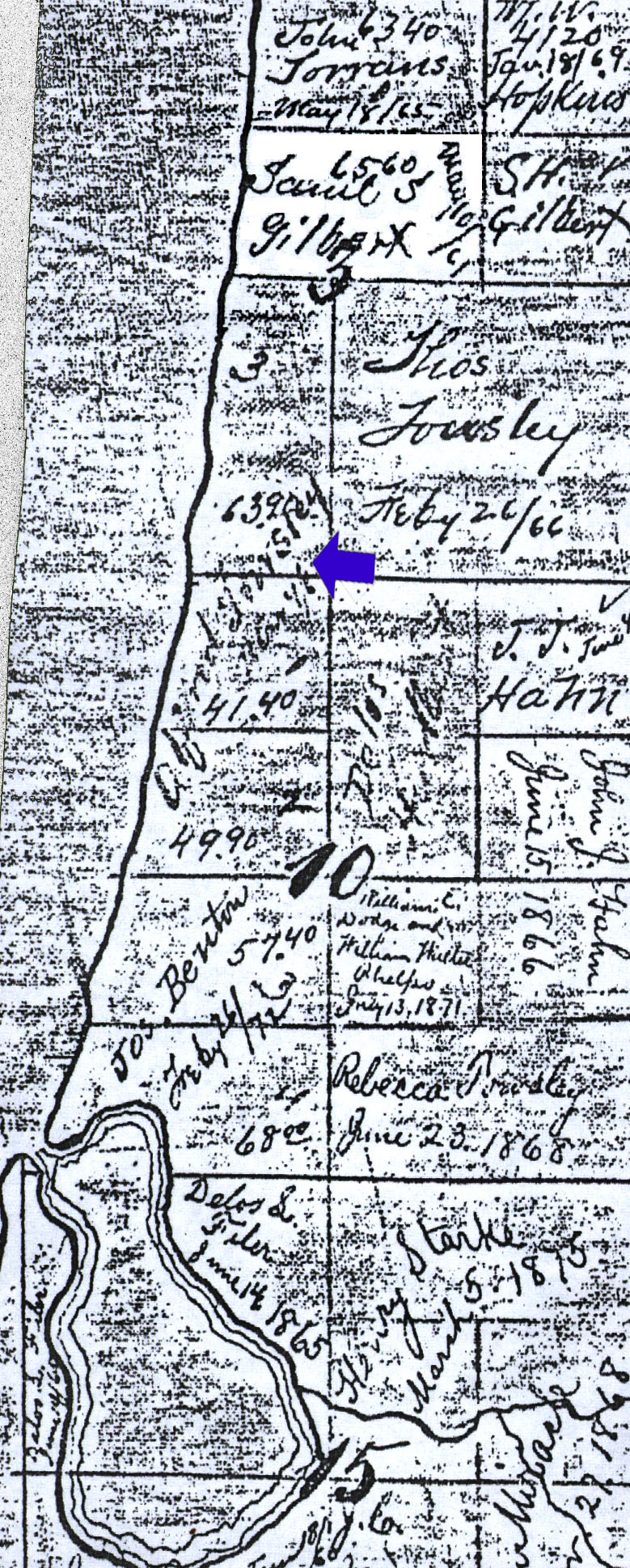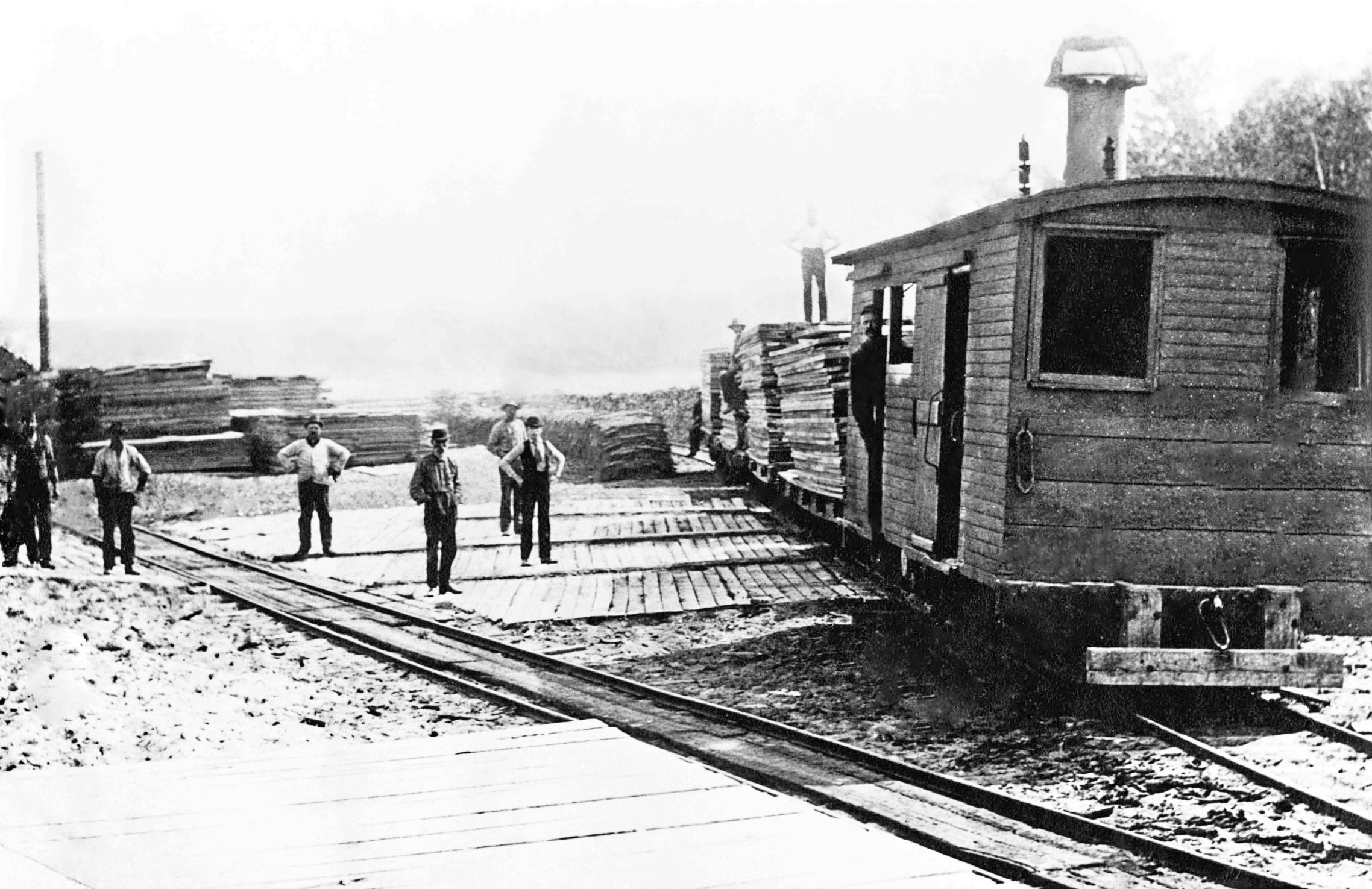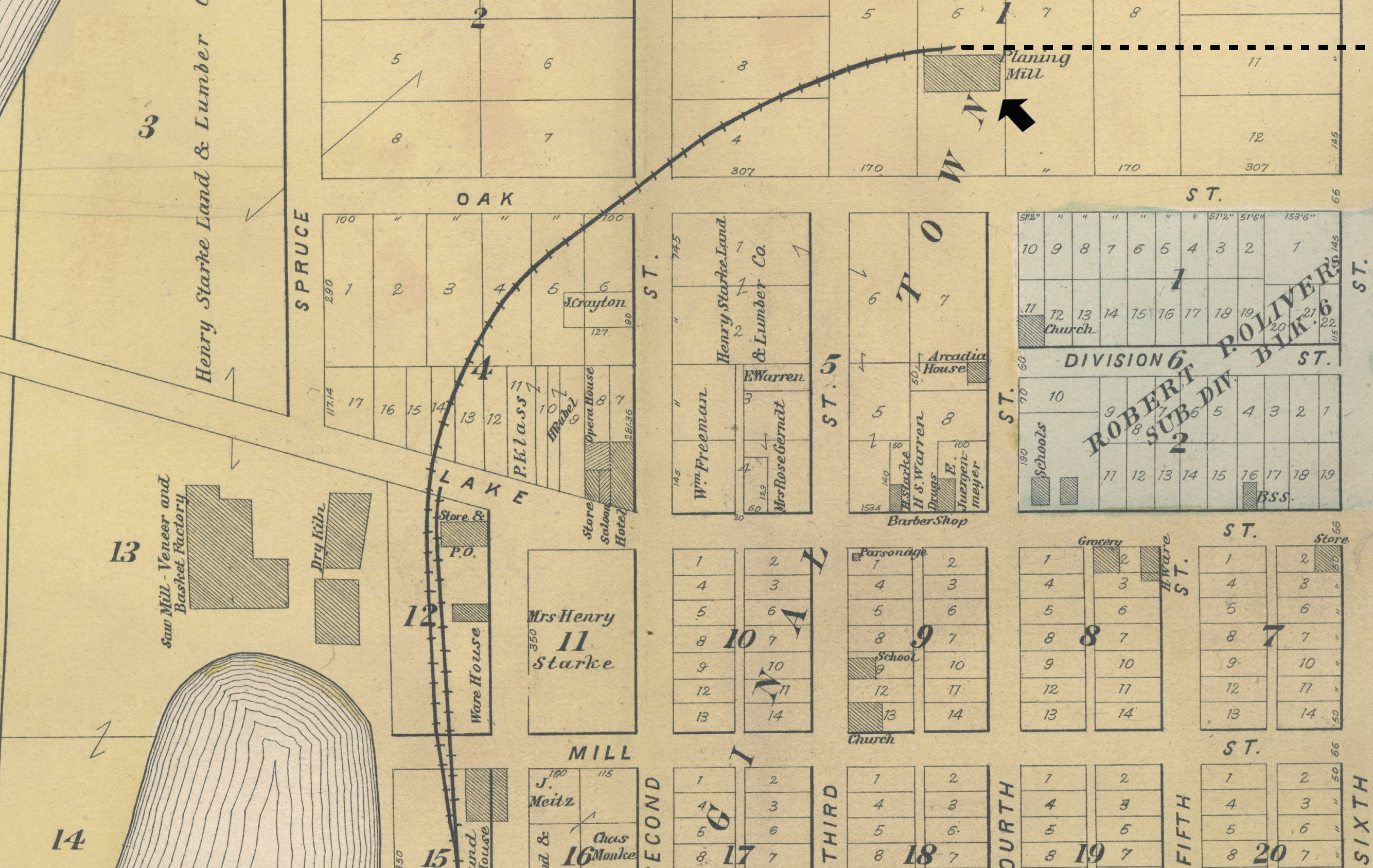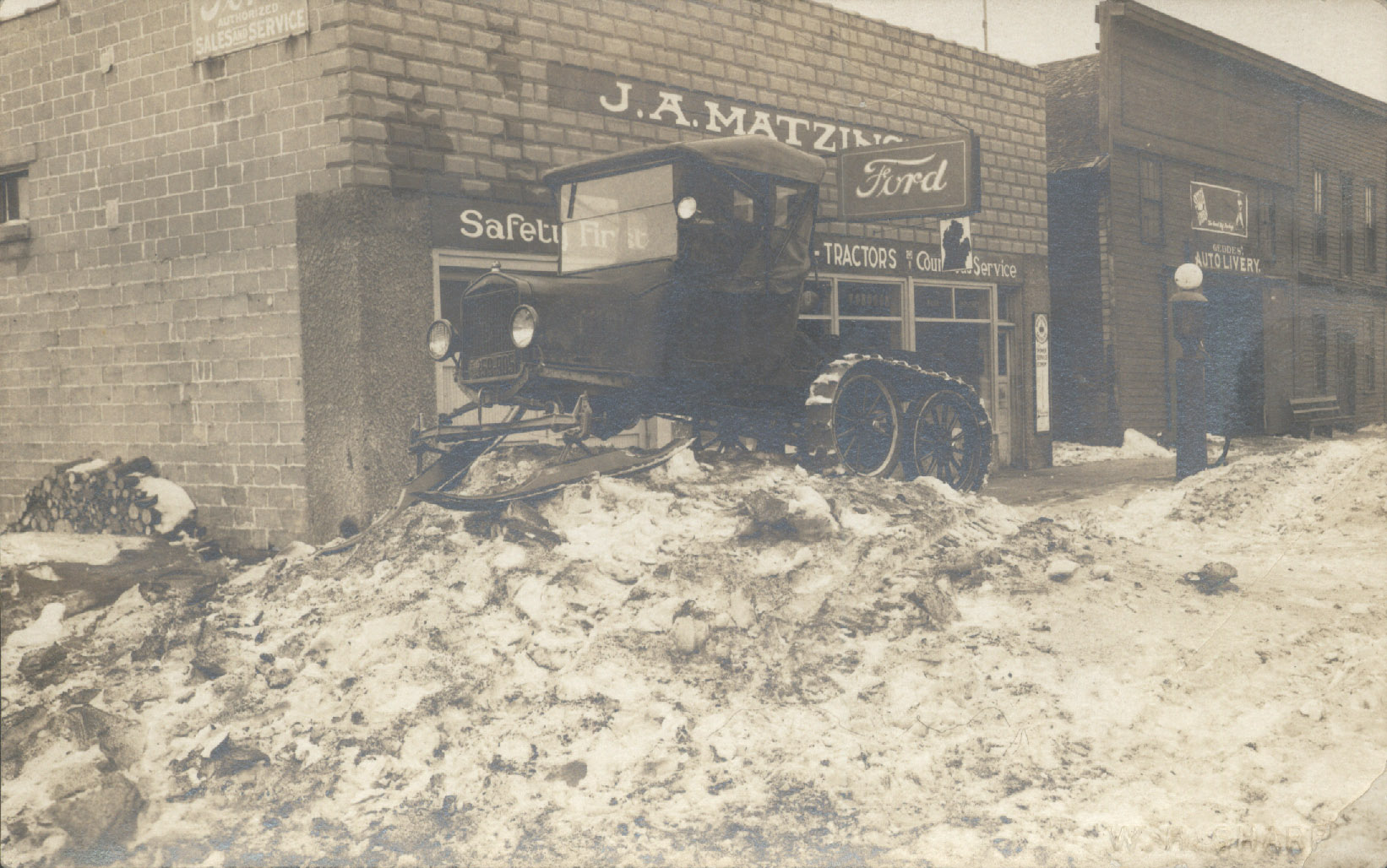Arcadia Firsts
by Ed Howard
Reprinted from Society News, the newsletter of the Arcadia Area Historical Society
June 2016. Volume 22 Issue 2.
|
Seems there’s always interest in things that occur first in any community, so let’s recognize a few “firsts” in our own Arcadia’s history. Of course, probably our most famous first is having “Arcadia’s own” Harriet Quimby become the first licensed female pilot in, not only Arcadia, but the entire United States. That is extraordinary. It was also interesting to find that our first museum was actually one created by William Matteson in his one-time Matteson Manor. Also, we know that Arcadia’s very first store was established by Henry Starke in the basement of his own home (1880) corner of First and Mill Streets; it was later he built the Company Store further north on First. But, let’s here consider some firsts that we probably didn’t know about. Thanks to recently found pioneer memoirs and notes, we can now know about Arcadia’s first wedding (involving early settlers), its first funeral--and a little more about Arcadia’s very first railroad. Then, we’ll end this report with a diary’s revelation that a winter activity we may have thought began in the 1960s, was actually introduced in 1929. |
|
Arcadia's First WeddingTo appreciate the uniqueness of Arcadia’s first wedding—and funeral, we must turn to the memoirs of Olivia Gilbert and meet the family involved in both. When Ohio-born and newly wed Olivia Gilbert arrived at her new home in what is now Burnham in 1863, there was only one family living at Bar Lake (now Arcadia), and they were the Towsleys. She writes that she can’t help but smile thinking about seeing that family for the first time. She explains, “To say the least, they were a very peculiar family. Having heard of our arrival, the whole family, consisting of the old man and woman, two sons and one daughter…all turned out the first Sunday to make us a good visit. And, like all my first impressions in this wild country, I shall never forget them as they appeared coming up to the house. First, came the old man with his bushy iron gray beard, woolly, unshaven and unkempt. Next, the old woman in a soiled and tattered dress and dilapidated sun bonnet. The youngest boy, a lad about 14 years, with pants rolled up to his knees, and his feet and legs coated over with thick, black mud. The girl, about two years younger, in much the same style of dress. Every one of them bare footed and bare headed…” After long hours and a hearty dinner, the family took its departure…” Olivia then tells of the “many kindnesses” she later received from that same family, and says “like the proverbial singed cat, they were better than they looked.” But, with this introduction, one can better appreciate this first wedding which involved members of that same “eccentric” family. Olivia believes it was the summer of ’69, “sometime after the old gentleman’s death” that the oldest son came to them and stated he wanted to be married to his cousin, a girl of about 15; she was living with the family. His mother was bitterly opposed to it, so he wanted Olivia to “get up” the wedding dinner and help make the arrangements with Justice of the Peace John Torrence. Olivia consented, and “the following Sunday was appointed for the happy event.” It was a bright, warm and lovely day for the wedding, but the arrival of the bridal party caused Olivia, and probably all present, to stare. “The bride was neatly enough dressed, but the groom had on neither coat, vest, nor suspenders, and before he got up the hill, he sat down on a log and pulled off his old boots, which hurt his feet, and trudged on up the hill barefooted—to be married.” Mr. Torrence had arranged to marry the couple via an Episcopal marriage service which is “quite solemn and impressible, but, having a keen sense of the ludicrous, it was hard work for him to maintain strict decorum.” Olivia believes, like they themselves, he was glad when it was over, and “…he could talk and laugh to his heart’s content.” After the ceremony she says, “…we all did ample justice to the dinner spread on a table under the green trees within sight of the blue waters of Lake Michigan…” Arcadia's First FuneralAs mentioned, Mr. Towsley had passed away before his son’s wedding, and it was his funeral that became the first for a settler on land to be called “Arcadia.” Mr. Towsley had drowned returning home from Manistee in his boat “one cold November night.” As her thoughts ramble through scenes both sad and ridiculous, Olivia writes “I think I must relate an incident which occurred at the old man’s funeral. Everything connected to the affair had been so sad and orderly, no sermon, no singing, or ceremony of any kind.” She then describes how they were all standing sad and respectful around the open grave, and a Mr. Bauman is thanking, on behalf of the family, all those who came to show their respect, “…when my little curly headed boy of about 5 years, who had been left at the house, came running down from the woods and elbowed his way through the crowd to the side of Mr. Bauman—he slipped his little hand into his and bending over the grave---gazed solemnly down upon the coffin. And as we watched his solemn little face, wondering what was his impressions of the scene before him---he suddenly looked upon the face of Mr. Bauman and said “Mr. Bauman, who do you suppose will milk Mr. Towsley’s cows now that Mr. Towsley’s dead?” I cannot describe the effect of such a speech at such a time. …Mr B. suddenly raised his hat to his face and coughed behind its friendly brim, and turning with his little friend still by the hand, he led them (all) back to the house…” Olivia followed with the rest, “…feeling as if I would like to shake him until every curl danced a jig over his mischievous little face.” She concludes, saying “And thus ended the first funeral [I] ever attended in Northern Michigan.” |
|
Arcadia's First RailroadLittle is really remembered about Arcadia’s very first railroad, the one that supplied the logs for Arcadia’s earliest lakeside lumber mill. But, notes from that long-ago meeting of Arcadia pioneer ladies, the one in which they discussed early roads, tells us much. In her accounts, Jennie Hovis states “No history of Arcadia pioneer roads would be complete without some mention of the pioneer railroad…The track or rails were made of timber 4x6 or 6x6 inches diameter, a narrow gauge track, and the engine was made of a Box Car. How it ran and pulled its train of logging cars I have never been able to tell." |
|
|
"The road bed ran just north of the John Hovis property (now Lamont’s/Ness’s--east side of M22), between that and the Hans Hanson home (now Stan Rennie’s) on out east just north of L.L. Finches and still east past Tom Tooheys.” She then explains that Arcadia was growing and could not get along with such a limited railway, “…so when the logs were off (gone) from where this road led, they built a road south of town. Although it was still a narrow gauge, it was composed of the usual rails and engines. Some years later, this in turn was discarded for a Standard gauge railroad with the usual equipment… Most of you know the fate of that road.” |
 As Mrs. Hovis implies in her description of Arcadia’s first railroad engine, box cars could be converted into steam engines. Here is one built by Robert Blacklock for the Frankfort Iron Works around 1872. |
|
One Last FirstWe’ll conclude this list of Arcadia “firsts” with an occurrence at Kalbitzers Store on a cold and blustery day in 1929. Throughout Benzie and Manistee Counties, it had been a cold and extremely snowy January, roads were closed, and country folks were often walking miles for groceries: here on the 31st it was no different. Anyone hearty enough to brave the elements in front of Kalbitzers that day would have been amazed when suddenly through the white haze and over the blowing drifts of Lake Street, came this roaring car-like machine on tracks and skies. After it parked, folks realized it was “young Kennon” from Frankfort and passenger John Howard who had hitched a ride to Kalbitzers to buy a pack of typing paper. They were riding in, quoting from Mr. Howard’s diary, “the snowmobile.” The machine was a product of John Matzingers Ford Garage in Frankfort. |
 Arcadia Township Map (1903 plat book) Arcadia’s first logging railway was probably an eastward extension of the spur running to the planing mill. |
|
|
 The “snowmobile” in front of its headquarters, John Matzinger’s Ford Garage in Frankfort. |
|
Kennon had come upon Mr. Howard on the Herring Lake flats. John had braved the storm and walked there to interview George Wilson and gain material for his book “The History of Herring Lake.” As may be surmised, Howard was in the process of typing the book and had run out of typing paper. Anyway, on this occasion, Arcadia experienced its first snowmobile, something it probably wouldn’t encounter again until the 1960s. |
 The northwest corner of an early map of Arcadia Township. The arrow locates the first Towsley family property. (
The northwest corner of an early map of Arcadia Township. The arrow locates the first Towsley family property. (

